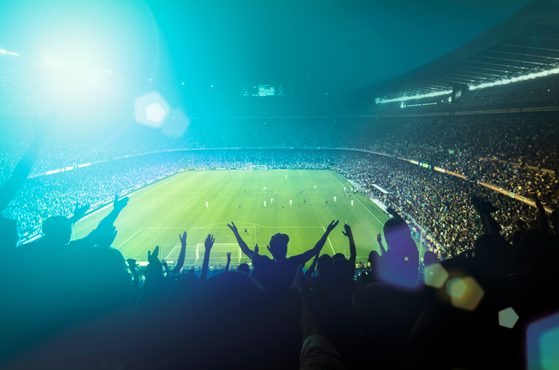With increased pressure on rugby’s governing bodies to mitigate risks around head injuries and concussions, World Rugby has seemingly taken a leap forward in requiring players at the recent Six Nations tournament to wear smart mouthguards.
Here, Catherine Forshaw and Huzaifa Moosa explore how smart mouthguards and other technologies are being used to assess head injuries and protect players and ask — does this go far enough to prevent concussions and long-term injuries?
Smart mouthguards — why now?
Rugby Union has faced serious criticism for its management of head injuries suffered by players. This includes concussive and sub-concussive blows that have allegedly resulted in players suffering from neurodegenerative conditions. A recent study by the University of Glasgow found that rugby players are 15x more likely to be at risk of motor neurone disease or amyotrophic lateral sclerosis than the general population.
This culminated in an application to the High Court in late 2023 to bring group litigation on behalf of hundreds of sportspeople (predominantly rugby union and league players) alleging a breach of duty of care by governing bodies in relation to head injuries resulting in permanent conditions or diseases.
International bodies have lagged behind national governing bodies and leagues, as the Rugby Football League and Super League clubs approved the introduction of smart guards in 2021. With CTE (Chronic Traumatic Encephalopathy) and head injuries becoming a mainstay of the player welfare agenda, international governing bodies have become increasingly aware to their exposure to liability and litigation.
That’s why World Rugby debuted its smart mouthguards and new Head Injury Assessment (HIA) protocols at the Women’s XV tournament in 2023 and required their use at the men’s Six Nations.
What is a smart mouthguard?
Although the mouthguards and gumshields generally worn in rugby may not necessarily prevent concussions, as their primary function is to reduce skull and face trauma they arguably mitigate the effect of impacts to the jaw on the rest of the skull.
Smart mouthguards go beyond this, containing chips that record g-force and direction of travel and force when players are in collisions or face impact. The data produced by smart mouthguards is transmitted in real-time to medical staff in the dugout to notify them of relevant ‘head acceleration events’ and facilitate their HIA assessment.
So, while smart mouthguards don’t diagnose a concussion or head injury, they do alert medical professionals to complete the relevant checks.
What is the HIA protocol?
The HIA contains steps required for medical staff to follow after a head impact and/or suspected concussion.
It contains three stages:
- HIA1 — a 12-minute assessment during the game (continuing even if the game ends) for a player who has suffered a head impact.
- HIA2 — an assessment of the player in the three hours following a match to identify any early signs of concussion and make an appropriate diagnosis. Here, the data produced by the smart mouthguards allows medical staff to have more precise information from which to consider a diagnosis.
- HIA3 — an assessment of the player after two nights of rest following a match (generally 36 to 48 hours after the match) to determine their progress or make a late concussion diagnosis.
Should concussion protocols go further?
Last month, during a loss to France at the Six Nations, Scotland hooker George Turner was forced to leave the field of play for a head injury assessment in-line with HIA1 after his smart mouthguard detected a ‘head acceleration event’ surpassing the relevant threshold. After his HIA1 assessment, Turner was permitted to return to the field.
OPRO — the primary manufacturer of smart mouthguards for international tournaments — has advised that the device will recommend a head injury assessment where there is “an impact above 70g and 4,000 radians per second squared”. This scientific method is believed to offer additional insight into each player’s exposure to head injuries in real time, enabling medical professionals to take mitigating action based on quantitative data.
Some commentators argue that concussion protocols need to go further. There have been calls for forced breaks of several games for players suffering from concussions, as well as a reduction in the number of games being played each year. Ultimately, however, it’s clear that smart mouthguards and HIA are steps in the right direction.
It will be interesting to see how this will affect any claims brought against rugby’s governing bodies. It’s understood that governing bodies have taken extensive steps and consulted experts to consider the options and technologies available to them before deciding on which products and manufacturers to proceed with.
Whether or not these extra steps and additional due diligence satisfy the standard of duty of care that governing bodies hold towards their players in preventing head injuries has yet to be tested in court. The extent to which potential liability that would otherwise sit at the feet of those governing bodies is deflected to the manufacturers and developers of smart mouthguards and other smart technologies will depend both on the level of due diligence done by the governing body and how closely connected the specific harm suffered is to the manufacturer’s alleged failings and the governing body’s alleged negligence.
Talk to us
Ultimately, all stakeholders will — as a bare minimum — need to show comprehensive records and documentation of testing, as well as steps taken to satisfy their duty of care. Legal advice should be sought at an early stage to minimise the risks of litigation and liability.
If you’d like to discuss the considerations that clubs, governing bodies and smart technology manufacturers should have in light of increased legal action for head injuries — or if you’re an individual hoping to learn more about how these new changes may impact you and your rights — talk to our expert sports law team.



